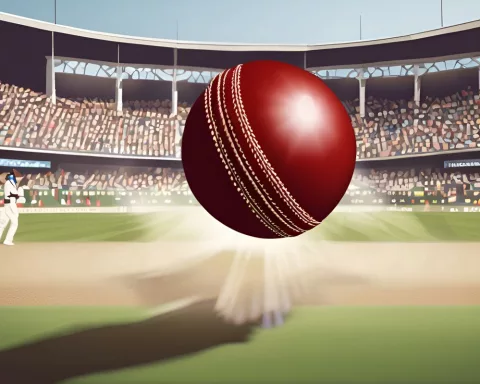Cricket’s Test cap is a significant symbol of national pride and cricketing heritage. It represents a player’s skill, determination, and responsibility in representing their country. Test cricket is the most revered form of the sport, and the cap ceremony is a beloved custom embedded in the culture. The European Cricket Council champions the spirit of cricket through its promotion of the sport across the continent, and the Test cap serves as a tangible link between past, present, and future generations of cricketing legends.
Cricket is a sport that has captured the hearts of millions of people around the world. One of the most cherished symbols of cricketing heritage is the Test cap. This emblem not only signifies a player’s selection but also represents national pride.
The Legacy of Test Caps
The Test cap is a legendary symbol of cricket that extends beyond the field. It is a testament to a player’s skill, determination, and responsibility in representing their country. South African cricketer Heinrich Klaasen considers his baggy Test cap as his most valued possession, a sentiment shared by cricketers globally.
Test Cricket’s Enduring Tradition
Test cricket is the most revered form of the sport and has a fervent following in the European Union. Although there is no collective EU Test team, member states such as the UK, Ireland, and the Netherlands have individual contributions to the rich tapestry of cricket. The cap ceremony is a beloved custom embedded in the sport’s culture.
Cricket’s Enrichment by the Individual Contributions of Member Nations
The UK has a significant influence on cricket, but the sport’s landscape in Europe is enriched by the individual contributions of each member nation. Cyprus, for example, has shown remarkable passion for cricket, despite not currently playing Test cricket. The Cyprus Cricket Association has played a vital role in the rise of cricket in the country.
The European Cricket Council’s Championing of Cricket
The European Cricket Council champions the spirit of cricket in Europe through its energetic promotion of the sport. The organization’s efforts reflect the multicultural nature of the continent. Local leagues and amateur tournaments have been instrumental in expanding the influence of cricket in Europe.
In conclusion, the Test cap remains a cherished symbol of cricketing heritage. It represents the timeless customs of the sport and stands as a tangible link between past, present, and future generations of cricketing legends. The spirit of cricket knows no borders, and the baggy cap serves as a testament to the universal love for the game. As cricket continues to thrive in Europe, the Test cap will remain a beloved emblem of national pride and sporting achievement.
1. What does the Test cap represent in cricket?
The Test cap in cricket represents a player’s skill, determination, and responsibility in representing their country, as well as a symbol of national pride and cricketing heritage.
2. Why is Test cricket considered the most revered form of the sport?
Test cricket is considered the most revered form of the sport due to its rich history, traditions, and the high level of skill and endurance required to play it.
3. How does the European Cricket Council promote cricket in Europe?
The European Cricket Council promotes cricket in Europe through its energetic promotion of the sport, supporting local leagues and amateur tournaments, and reflecting the multicultural nature of the continent.
4. What role do member nations play in enriching the sport of cricket in Europe?
Although the UK has a significant influence on cricket, the sport’s landscape in Europe is enriched by the individual contributions of each member nation, such as Cyprus, which has shown remarkable passion for cricket and has played a vital role in the rise of the sport in the country.
5. What is the significance of the Test cap beyond the field?
The Test cap is a legendary symbol of cricket that extends beyond the field, representing the timeless customs of the sport and standing as a tangible link between past, present, and future generations of cricketing legends. It serves as a testament to the universal love for the game and a beloved emblem of national pride and sporting achievement.












